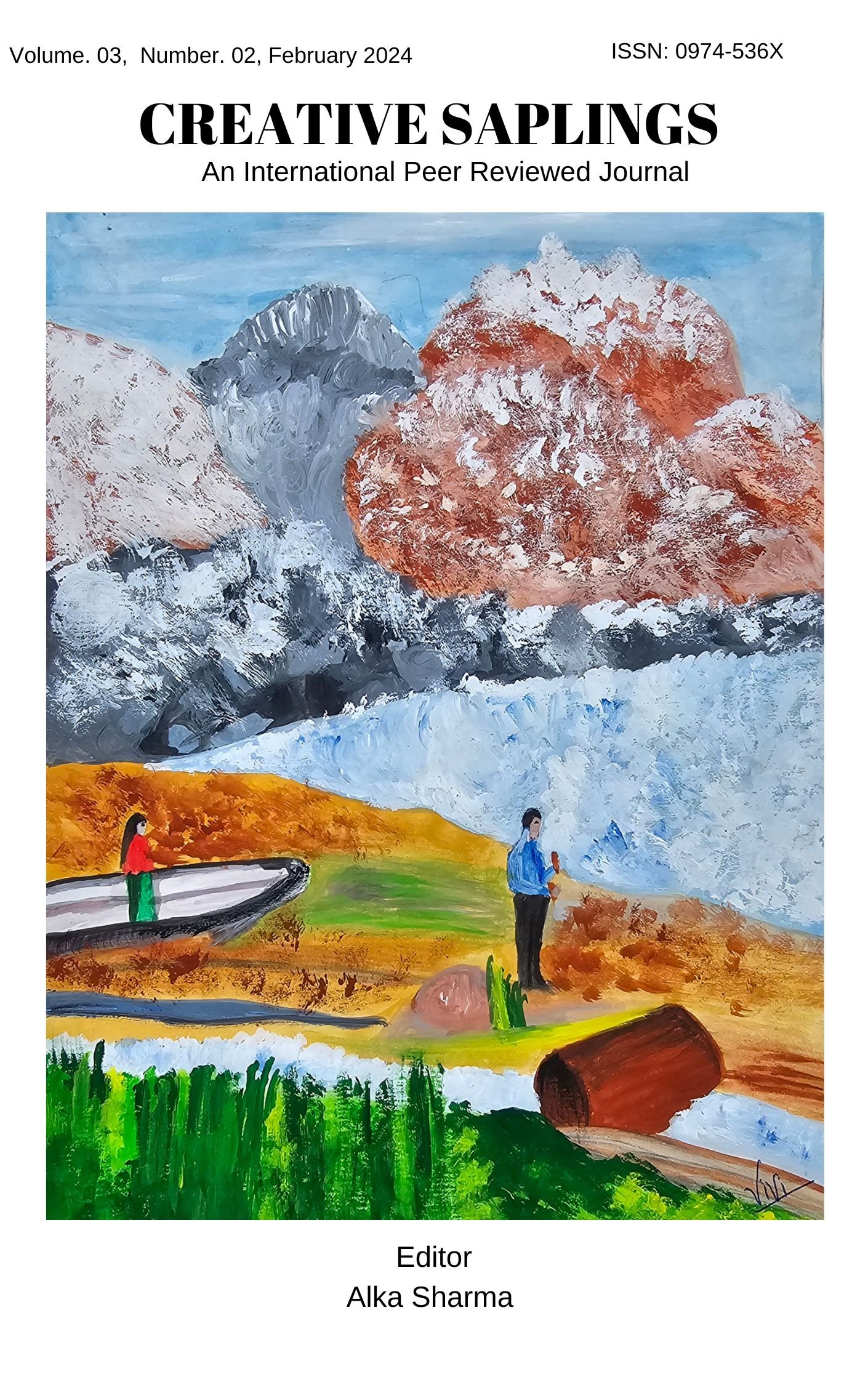Intersectionality in Girlhood Studies: Analysing the Denied and Reclaimed Journeys of Agency in Diverse Societal Milieus
DOI:
https://doi.org/10.56062/gtrs.2024.2.11.513Keywords:
Girlhood, Womanhood, Abuse, Self-discovery, Agency, TransitionAbstract
The transition from girlhood to womanhood is a fundamental and often natural phase in a young woman's life, marked by self-discovery and growth. However, for a vast sea of girls across various regions and races, this process is unnaturalised and tainted by violence, abuse and suppression of identity. Their girlhood is stifled by a patriarchal society expecting them to conform to conventional gender roles, leaving them no room for joyful self-exploration. Therefore, girlhood studies becomes a crucial field of research to understand and highlight the resilience, agency, and creativity of girls while acknowledging the myriad systemic challenges they face, serving as poignant reminders of the need to nurture the girlhood of all young women, allowing them to flourish and discover their own unique paths to womanhood. This paper herein proposes to delve into this theme, seeking to understand how these dynamics influence the lived realities of girls who are denied a free girlhood, while exploring how they reclaim their voice in their fight against oppression. This study draws insights from Alice Walker's coming of age novel 'The Color Purple' along with selected sections from Rassundari Devi's autobiography 'Amar Jiban,' as these literary works illuminate the harrowing experiences of female characters forced into premature adulthood. Additionally, the study references 'To Kill a Mockingbird' in order to compare the nuances of stifled girlhood experiences across the boundaries of race, region and ethnicity. Scholarly voices such as Tanika Sarkar and Martha J. Cutter, etc. will also be cited simultaneously to enrich the analysis by encompassing aspects of feminist literary theories.
Downloads
References
Barry, Peter. Beginning Theory. An Introduction to Literary and Cultural Theory. Second Edition. Manchester University Press, 2009.
Cutter, Martha J. “Philomela Speaks: Alice Walker’s Revisioning of Rape Archetypes in The Color Purple.” MELUS, vol. 25, no. 3/4, 2000, pp. 161–80. JSTOR, https://www.jstor.org/stable/468241
Davis, Angela Y. Freedom Is a Constant Struggle: Ferguson, Palestine, and the Foundations of a Movement. Edited by Frank Barat, Haymarket Books, 2016, p. 135.
Devi, Rassundari. “Amar Jiban.” Trans. Enakshi Chatterjee. Women Writing in India: 600 B.C. to the Present, edited by Susie Tharu and K. Lalita, vol. 1, Feminist Press at the City University of New York, New York, 1991, pp. 192–202.
Hajare, Ravindra D. “Predicament of Women in The Color Purple: A Critical Study.” Gurukul International, 2015, https://gurukuljournal.com/predicament-of-women-in-the-color-purple-a-critical-study-written-by-ravindra-d-hajare/
Hakala, Laura. “Scouting for a Tomboy: Gender-Bending Behaviors in Harper Lee’s To Kill a Mockingbird.” Digital Commons@Georgia Southern, spring 2010, https://digitalcommons.georgiasouthern.edu/etd/176
Lee, Harper. To Kill a Mockingbird. Arrow Books, 2010.
Malhotra, Meenakshi, editor. Introduction (Rashsundari Debi). Representing Self, Critiquing Society: Selections from Women’s Writing. Worldview Publications, Delhi, 2016, pp. 111–120.
Moitra, Swati. “Goddesses and Mortals: Rashsundari Debi and the Grihlaksmi’s ‘Work'.” Representing Self, Critiquing Society: Selections from Women’s Writing, edited by Meenakshi Malhotra, Worldview Publications, Delhi, 2016, pp. 161–176.
Ross, Daniel W. “Celie in the Looking Glass: The Desire for Selfhood in ‘The Color Purple’.” Modern Fiction Studies, vol. 34, no. 1, 1988, pp. 69–84. JSTOR, http://www.jstor.org/stable/26282404
Sarkar, Tanika. “On Re-Reading the Text.” Representing Self, Critiquing Society: Selections from Women’s Writing, edited by Meenakshi Malhotra, Worldview Publications, Delhi, 2016, pp. 134–160.
Seidel, Kathryn Lee. The Southern Belle in the American Novel. University Presses of Florida, 1985.
Wahlstrom, Marten. “Strength in Numbers: A Feminist Analysis of The Color Purple by Alice Walker.” DIVA, 27 Oct. 2021, www.diva-portal.org/smash/record.jsf?pid=diva2%3A1606314
Walker, Alice. The Color Purple. Weidenfeld & Nicolson, 2014.
Downloads
Published
Issue
Section
License
Copyright (c) 2024 Ayushi

This work is licensed under a Creative Commons Attribution-NonCommercial 4.0 International License.





